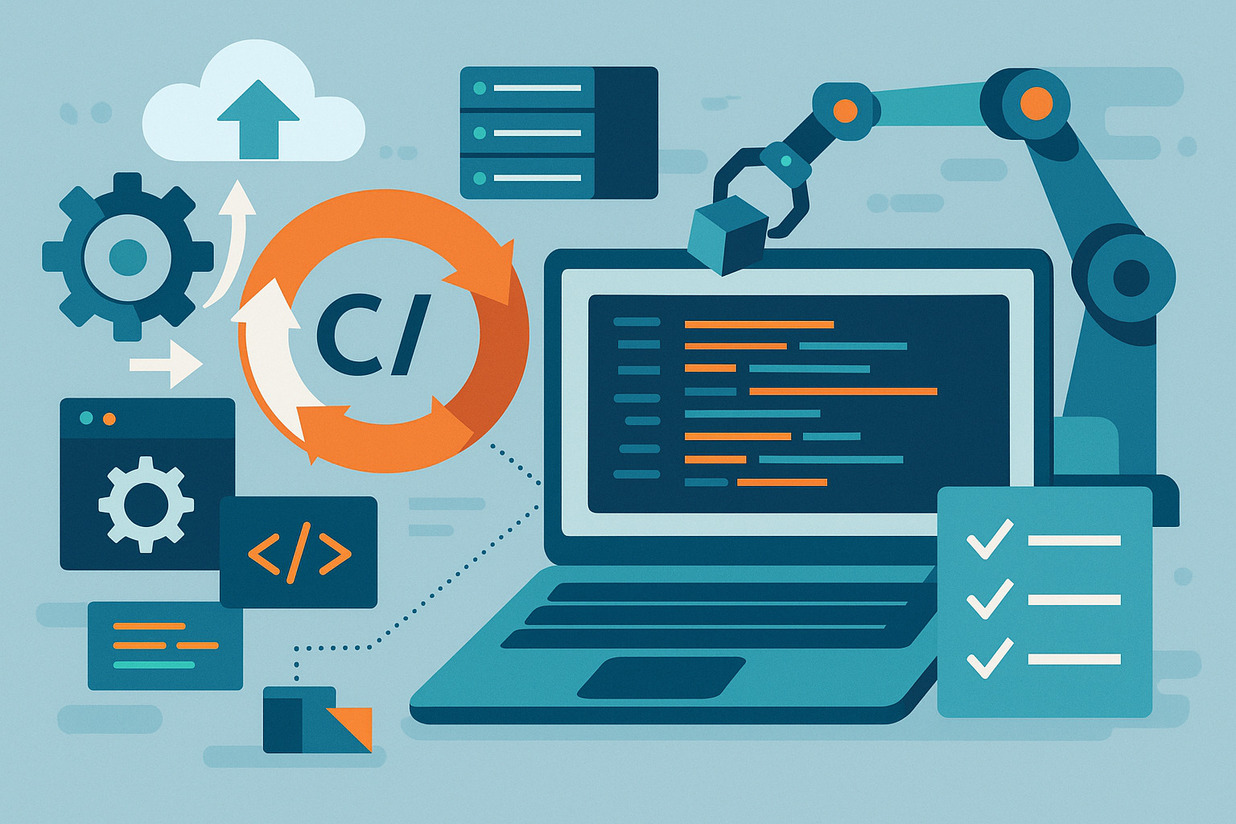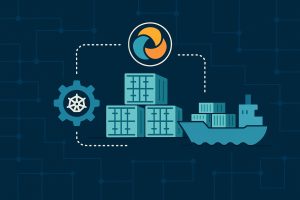
Easier Life for Integration Teams
Deploying integration flows should not rely on manual steps every time updates occur. Instead, organizations using Spagic as their middleware integration tool should automate deployment through a CI/CD pipeline. With this approach, project releases become smoother, faster, and more consistent. Moreover, automation reduces errors, accelerates delivery, and builds greater confidence within the team for every release.
While manual deployment might work initially, the risk of mistakes increases as the system grows. Even a small misconfiguration can cause downtime or delays in operations. Therefore, many teams adopt CI/CD to keep the process repeatable, well-documented, and easier to debug, ensuring that each release maintains a high level of reliability.
By using CI/CD with Spagic, teams can move integration projects from development to production in just a few steps. This method not only improves speed but also enhances quality, stability, and transparency throughout the entire software lifecycle, creating a more reliable deployment process overall.
Understanding Spagic’s Role in a CI/CD Setup
Spagic packages integration logic as deployable artifacts, which include service flows, connectors, and configuration files. Additionally, you can version these artifacts and deploy them across different environments, making Spagic an excellent choice for integration within a CI/CD strategy.
With every commit to the source repository, the pipeline triggers a build process that generates a new artifact. Depending on the project setup, you can use Maven or custom scripts to handle this process. What matters most, however, is ensuring that the artifact remains ready for the next deployment stage, keeping the workflow consistent and reliable.
Moreover, proper source control plays a critical role in maintaining stability. You should store each environment configuration (dev, staging, and prod) separately and link it to the correct branch or rule. This approach guarantees that staging deployments won’t interfere with production, ensuring safer and more predictable releases.
Setting Up Continuous Integration for Spagic Projects
The first step involves setting up the pipeline to react immediately to changes in the codebase. Most teams choose tools like Jenkins, GitLab CI, Bamboo, or CircleCI for this task. With every Git push, the pipeline triggers the build step, generating a deployable artifact. This approach ensures that updates move smoothly through the workflow.
During the build process, you can run unit tests, perform static code analysis, and package workflows for deployment. Additionally, a Spagic project can be archived as a ZIP or WAR file, depending on deployment requirements. For projects that include Java-based custom logic, the process compiles it automatically, ensuring everything is ready for deployment.
After completing the build, upload the artifact to an internal repository such as Nexus or Artifactory. This step not only preserves version history but also simplifies rollbacks to stable releases, making deployments safer and more reliable.
Deploying Spagic Projects with Continuous Delivery
The next step involves automatically deploying the generated artifact. To achieve this, teams typically prepare a deployment script or Helm chart, especially when working with containerized environments. Depending on the setup, you can host the Spagic runtime on Kubernetes, bare-metal servers, or virtual machines, giving teams flexibility in choosing their infrastructure.
Moreover, deployment can follow either a direct or staged approach. In a staged workflow, you first deploy to the development environment for smoke testing, then move to staging, and finally to production. Additionally, many teams add approval steps before the production rollout to maintain stricter control and reduce risks during deployment.
Equally important, you need to maintain environment-specific configurations. To achieve this, teams often rely on environment variables, secrets management tools, and external configuration files. This strategy ensures that each deployment stays separate, secure, and tailored to its respective environment.
Integrating Automated Testing into the CI/CD Pipeline
Quality isn’t just about whether the code runs. It’s also about data accuracy, correct responses, and performance. Automated testing is essential in a CI/CD setup.
Unit tests can run during the build. Integration tests may verify interactions between workflow components. Frameworks like Postman, Karate, or custom JUnit tests are commonly used.
Test results are fed back into the CI/CD platform. If a test fails, the pipeline can block the next step and alert the developer immediately—keeping bugs out of production.
Setting Up an Artifact Repository for Versioning
One of the best practices in automation involves maintaining proper artifact versioning. Simply storing build outputs in a folder doesn’t provide enough control. Instead, you need detailed tracking—recording who built the artifact, when it was created, and where it was deployed. This level of tracking ensures transparency and reliability in every release.
For better management, teams often use Maven repositories like Nexus. With every new build, the pipeline uploads the artifact along with metadata. Additionally, you can apply versioning strategies such as semantic versions (v1.2.3) or build-based formats (build-20240624). These practices help keep artifacts organized and easy to identify.
Maintaining a dedicated artifact repository adds significant value. At any time, you can redeploy a previously working version without rebuilding it from source. Moreover, if a new build introduces bugs, rolling back to a stable release becomes quick and seamless, ensuring minimal disruption to operations.
Automating Kubernetes Deployments with Helm
If you containerize the Spagic runtime, deploying it to Kubernetes becomes the logical next step. This is where Helm charts excel because templated configurations make it easy to push new Spagic versions to the cluster. As a result, teams can maintain consistent and repeatable deployments across environments.
With each CI/CD run, the pipeline can trigger a helm upgrade for the development or staging namespace. After successful testing, the team can approve the update for production. For even safer updates, you can implement blue-green or canary deployments, which gradually shift traffic and reduce the risk of downtime.
Additionally, storing Helm values configuration in Git ensures full version tracking of all changes. If issues arise, you can run the helm rollback command to return to a previous version quickly and predictably, ensuring stability while minimizing disruption.
Using Webhooks for Triggered Deployment
Some teams prefer dynamic triggering, especially when a new tag appears in the Git repository or a new release shows up in the artifact repository. In these situations, webhooks provide an efficient way to start deployments automatically. This approach not only streamlines the process but also keeps updates closely aligned with real-time changes.
Once triggered, webhooks can launch Jenkins jobs, GitLab pipelines, or custom scripts to deploy the new Spagic package. As a result, deployments happen faster and with less manual intervention, improving both speed and consistency across environments.
However, authentication plays a crucial role when using webhooks. To secure the process, you should implement secret tokens and strict access policies. This ensures that only authorized triggers can start deployments, keeping automation both safe and reliable.
Integrating Logging and Monitoring for Observability
When you automate deployment, you should also automate monitoring. This is crucial because if something goes wrong, the team must quickly identify the source of the problem. For this reason, CI/CD pipelines often integrate with logging and monitoring tools to ensure full visibility into the process.
During every deployment step, the system logs outputs and stores them in a centralized log server for later review. On the production side, teams commonly use tools like Prometheus for metrics and Grafana for dashboards. This combination not only provides real-time insights but also makes troubleshooting faster and more efficient.
If an error occurs, automated alerts immediately notify the team via Slack or email. As a result, they don’t need to manually watch every release. Instead, the system automatically informs them when something requires attention, allowing teams to focus on resolving issues rather than constantly monitoring.
Managing Configuration with a GitOps Approach
Separating configuration from code is a good practice. But putting that configuration under version control is even better. GitOps means storing and tracking deployment configs in Git.
Environment config files can live in separate branches. When updates are needed, a pull request is created—ensuring all changes are reviewed. This helps keep deployments consistent and secure.
Tools like ArgoCD act as GitOps engines. When a new commit is pushed to the config repo, ArgoCD applies it automatically to the cluster. Git becomes the single source of truth, and deployments happen without manual intervention.
Better Integration Through Automation
Using a CI/CD pipeline for Spagic deployment isn’t just about speed. It’s about confidence, repeatability, and an organized process. From commit to test, build, and deploy—every step is controlled and traceable.
Automation frees up more time for meaningful tasks—like improving integration logic or enhancing service responses. Developers can focus on the core value, not repetitive deployment chores.
When deployment is consistent and simple, teams get results faster—from development to production.

